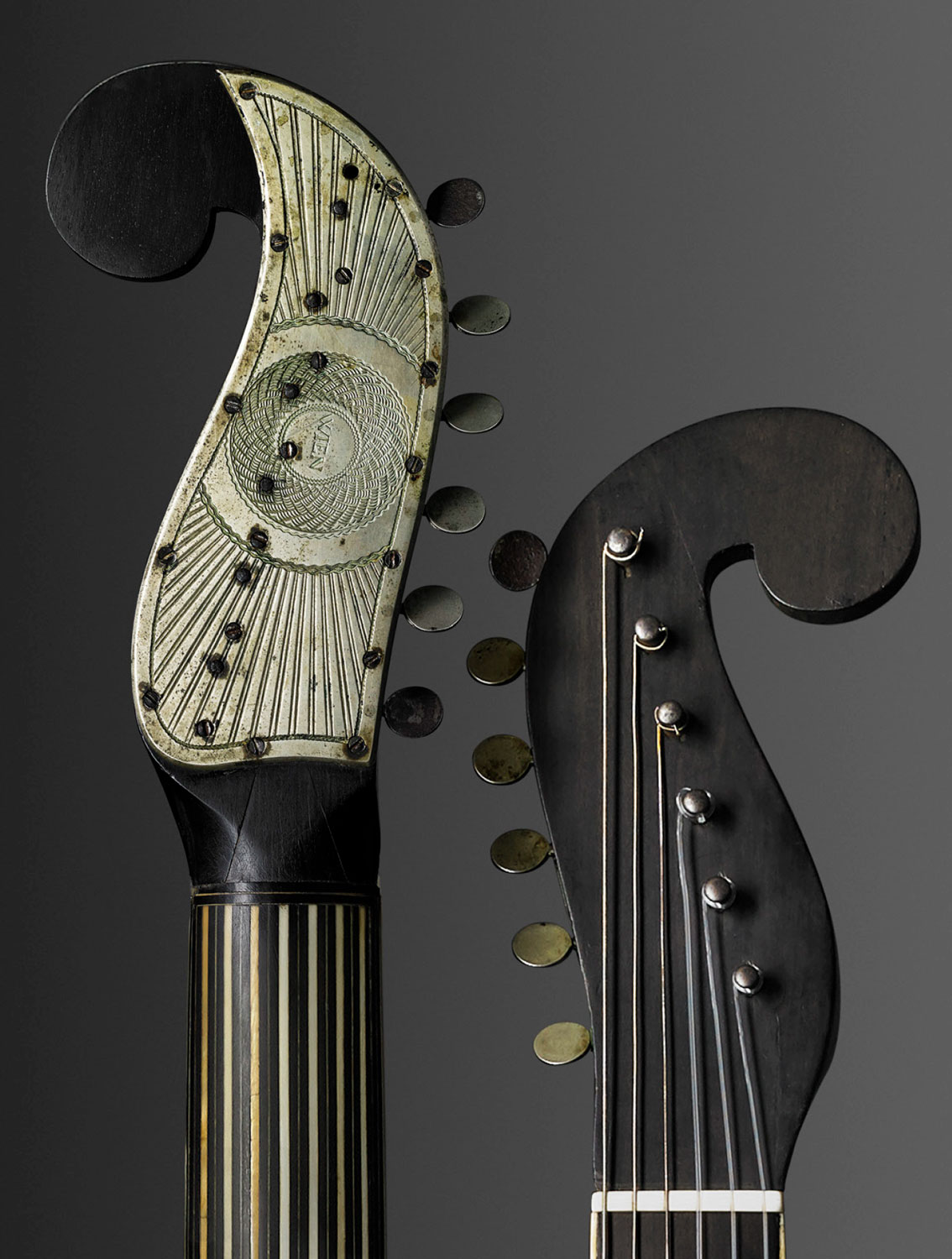Pupil of the Celebrated Stauffer
Martin’s business was initially a full-line music store, which may explain the relatively small output of guitars during his New York period. He moved his operation to Pennsylvania in 1838, but kept the “New York” stamp on his guitars until 1898 due to distribution agreements.
Martin began by making guitars similar in design to those of his mentor or influencer, Johann Stauffer of Vienna. The label on the 1834 in this collection reads, “C. FREDERICK MARTIN, from Vienna, Pupil of the celebrated STAUFFER, GUITAR & VIOLIN MANUFACTURER.” While there is strong evidence to suggest that Martin may indeed have been Stauffer’s apprentice in Vienna, this has yet to be definitively established.


There are marked similarities between the instruments of the older and younger maker including the scroll-shaped headstock, the adjustable neck with floating fingerboard, and the bridge with downward pointing mustachios – all typical design elements of Viennese guitars. There are, however, some important differences worth noting.
Stauffer’s backs exhibit a lesser longitudinal arch than Martin’s and lack the neck block extension that runs parallel to the fingerboard.
By the 1850s, Martin had dropped the adjustable neck and scroll-shaped headstock design, now replaced by a fixed neck and slotted head squared at the top. Ladder bracing had been replaced by his innovative x-bracing, still found in Martin guitars today.
